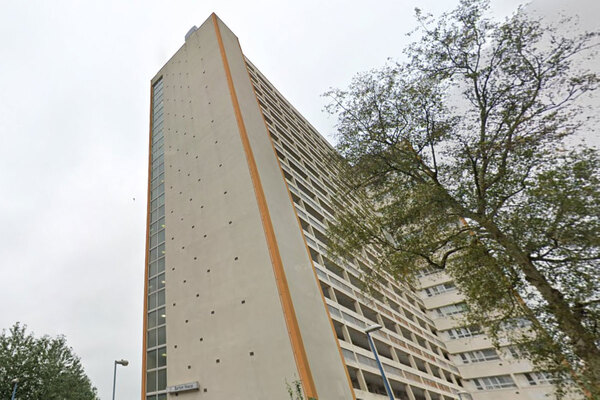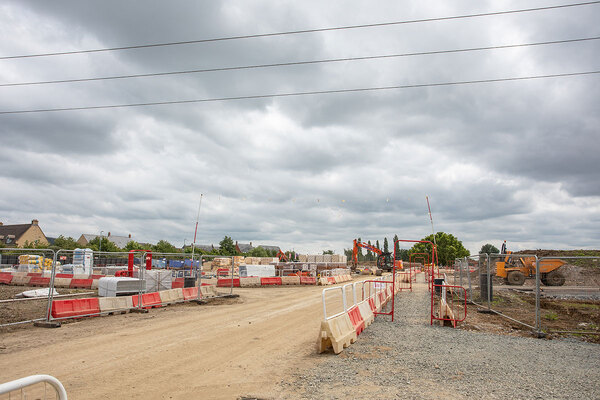Residents’ bills skyrocket as heat networks pile on extra costs
Leaseholders and tenants are facing extortionate bills due to a type of heating that is being promoted as a key part of the government’s transition towards net zero.
As part of an investigation being published today, Inside Housing has spoken to residents who have reported paying annual bills that are up to three times the average gas bill because their homes are connected to a heat network.
A heat network is a communal system where heat is distributed to homes from a central source via pipes.
They are set to play an important part in the UK’s transition towards net zero with the Committee on Climate Change estimating that 18% of the country’s heat will need to come from heat networks if the UK is to meet its 2050 target.
Read Inside Housing’s full investigation into heat network’s here
However, residents who are already living with heat networks are facing huge costs, in part due to the cost of repairing and maintaining systems that are often poorly installed to begin with.
Lucie Gutfreund, who lives in a one-bedroom flat in north London that she leases from L&Q, said it can cost her £1,700 per year – an average of £140 per month – to heat her home.
This cost is made up of approximately £600 per year for energy, £740 for electricity for the communal boilers, £300 for repairs to the communal network and a £50 contribution to a sinking fund specifically for the heating.
Ms Gutfreund’s bill for her one-bedroom flat is more than three times what British Gas states is the average annual gas spend for a home with medium usage.
While the average gas spend does not factor in maintenance costs, for example replacing a broken boiler, the comparison gives an idea of the huge bills some heat network customers are facing compared to those with gas boilers.
A spokesperson for L&Q said: “L&Q Energy operates on a not-for-profit basis, and we’re fully transparent with prospective buyers and renters about the services we provide.”
Philippe Wilson, a private leaseholder who lives in the New Festival Quarter scheme in east London, said he also expects to pay more than £1,000 to heat his home via a heat network this year.
This includes a roughly £400 usage charge, £440 on maintenance, £220 on servicing individual units in his flat and £99 on billing.
Bellway, which built New Festival Quarter, said it was not responsible for ongoing maintenance of the heating system and Encore, which took over management of the estate last year, declined to comment.
Rotherham Council tenant Jayson Collier has spent on average more than £100 per month heating his three-bedroom home, which is connected to a heat network, over the past four years.
This is despite council tenants winning a campaign against the council in 2017 to have their tariff reduced. Before that, some residents reported paying up to £400 per month on heating.
A representative from Rotherham Council said in 2018-19 the council spent over £370,000 investing in insulation at the estate and has frozen energy charges on its heat networks since 2018.
They added: “Our records show most tenants are now paying an average of £50 per month, which is comparable with the average gas bill for a property within the UK, with only a small number of tenants paying more than this.
“However, we do understand that, despite our best efforts, some tenants living on this estate are struggling to afford to heat their homes and because of this we have credited each tenant on a pre-payment meter with £80 towards their winter fuel bill from the government’s COVID-19 winter relief fund.”
Despite spending huge amounts of money to heat their homes, many residents told Inside Housing the systems are unreliable, with some experiencing outages that lasted weeks or months at a time.
Today, large developments are often attached to a heat network as a condition of planning, especially in London where heat networks have long been encouraged as part of the London Plan.
Nicholas Doyle, co-founder of Chirpy Heat, a consultancy that helps social landlords manage their heat network portfolios, said one of the main problems with heat networks in the UK is the way in which they are built.
He said: “I think the ones that were built a number of years ago weren’t built to be managed. They were built just to get across the line in terms of planning. So they weren’t designed as well as they should be, they weren’t specified as well as they should be and they weren’t commissioned as well as they should be.”
A spokesperson from the Department for Business, Energy and Industrial Strategy said: “Heating in buildings forms a significant part of the UK’s carbon footprint, so changing how we warm and cool our homes and workspaces is vital in eradicating our contribution to climate change by 2050.
“Heat networks will play a critical role in decarbonising heat, and we continue to work to improve existing networks’ performance, making sure consumers are paying a fair price and getting a reliable supply of heating.”
Sign up for our asset management newsletter
Already have an account? Click here to manage your newsletters












